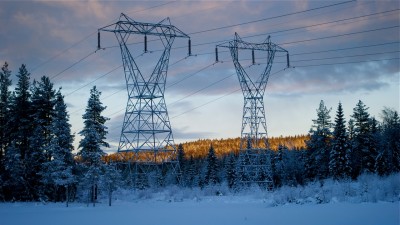With Norway’s mountain reservoirs at historically low levels, energy analysts are warning that this winter’s high prices for hydroelectric power will likely stay high through the summer as well. Renewed fears over nuclear power plants, following earthquake destruction in Japan, are also playing a role in soaring energy rates.

Ironically, Norway’s economy as a whole stands to benefit from the misery elsewhere in the world. As newspaper Aftenposten noted on Thursday, the recent floods in Australia sent coal prices up, unrest in the Middle East has pushed oil prices way up again, and now the devastating earthquake and tsunami that hit Japan last week has prompted Germany to shut down several nuclear power plants. All this has led to much higher market prices not only for Norway’s oil, but now for its gas as well.
That would seemingly bode well for a country whose economy is fueled by its oil and gas industry. Economists are already predicting that tens of billions of unexpected kroner will flow into Norway’s state treasury during the course of the year.
Norwegian consumers, though, will feel the higher prices like everyone else around the world. Electricity bills this winter already were double or even triple those from last year, especially for those consumers who had opted to base their bills on spot prices. Analysts told Norwegian Broadcasting (NRK) on Thursday morning that today’s high prices are here to stay.
On Wednesday, officials at the national firm in charge of Norway’s electricity network, Statnett, announced that they are “far more worried about the power situation now than earlier this winter.” Water levels in the reservoirs that serve Norway’s hydroelectric plants have never been so low for this time of the year. In fact, claimed Statnett, the reservoirs only contain half the water considered “normal” for March.
“We are in a situation we have never been in before, at most (reservoir) locations,” said Statnett’s chief executive Øyvind Rue. It’s been a bitterly cold winter, with record low temperatures setting in already last fall, and it’s still cold, delaying the annual melt of snow and ice.
If temperatures remain cold, Rue fears a “challenging” situation, especially for southern Norway. The renewed concerns about the safety of nuclear power plants in both Sweden and Finland could also lead to maintenance shutdowns that would remove another source of power supply from the Nordic market.
Regardless, reports Aftenposten, Norway must now import relatively large amounts of electricity to offset the lack of locally generated hydroelectric, and the import prices are high. Annual bills for a family in a single family home are expected to jump by at least NOK 3,000 (around USD 530), plus all the taxes and fees imposed by the state. That’s based on predicted prices of around NOK 0.50 per kilowatt hour.
“We’re looking at winter prices in the summer as well,” analyst Olav Johan Botnen of the local analytical firm Markedskraft told Aftenposten. The only consolation is that consumption in the summer in Norway, with low if any air conditioning costs, is so much lower that households won’t feel the pinch as badly.
Views and News from Norway/Nina Berglund
Join our Reader Response forum if you’d like to comment on this story.

